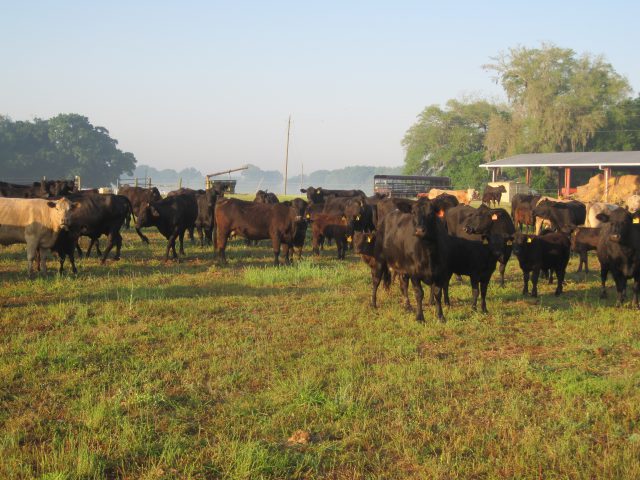On Tuesday, July 18th, 2017, USDA announced confirmation of an atypical case of Bovine Spongiform Encephalopathy (BSE) in an 11 year-old cow in Alabama. The case was detected at a livestock market in Alabama where the cow was showing clinical signs of the disease, which were detected through routine surveillance. The animal was identified prior to it posing any risk to human health or the food supply, confirming that the USDA’s interlocking safeguards and measures are effectively working. The case was confirmed by USDA’s Animal and Plant Health Inspection Service (APHIS) National Veterinary Services Laboratories (NVSL) as an atypical (L-type) BSE case.
Two Types of BSE
There are two types of BSE, neither of which are contagious: Classical and Atypical. Classical BSE is the form that occurred in the United Kingdom, beginning in the 1980’s. Atypical BSE natuatlly occurs in in a very small percentage of the cattle population in cows eight years of age or older. Research has determined that atypical BSE arises randomly and spontaneously in all cattle populations. In contrast, Classical BSE is known to come from cattle consuming feedstuffs contaminated with the infectious prion agent, or feeds derived from contaminated livestock such as from meat-and-bone meal. Since 1997, animal byproduct feeds have been banned from cattle feeds in the U.S. The cow in Alabama was confirmed as atypical, meaning it was a sporadic case of the disease.
Human Health Risk
Classical BSE has been linked to the variant Creutzfeldt-Jakob human disease (vCJD) which is a degenerative brain disorder that leads to dementia and, ultimately, death. Creutzfeldt-Jakob disease (CDJ) became a hot-issue in the 1990s when residents of the United Kingdom developed a form of the disease known as vCJD from eating meat from diseased cattle. However, “classic” Creutzfeldt-Jakob disease hasn’t been linked to contaminated beef. While serious, CJD is rare, with vCJD as the least common form. Worldwide, there is an estimated one case of CJD diagnosed per million people each year, most often in older adults.
Market Impact
At this point, it is very difficult to determine what impacts this particular case will have on the current status of the market. Chris Prevatt, UF/IFAS Livestock Economist, stated it is likely to take a few months for us to determine how this will impact trade. Until China, Japan, and South Korea respond, we will not have a good grasp of the market impact. Prevatt went on to state “The last occurrence of atypical BSE in April 2012 had minimal impact. The worry is that some foreign markets may use this as an excuse to raise trade barriers.”
In the past atypical cases of BSE have had little influence on market prices. Ed Neel, Dothan Livestock Market, stated “Right now markets are holding steady and look solid for the fall,” he also mentioned that in the past his livestock market did not see a major price swing from other atypical cases.
Please reach out to the University of Florida Extension office in your county for more information, we will keep you up to date on this topic as it progresses and more information is made available.
For more information on this recent case, use the following links:
USDA Press Release
AL Dept of Ag Press Release
- Summer Mineral Consumption for Cattle on Pasture - July 11, 2025
- Hens in the Heat - July 11, 2025
- Horn Fly Control In Cattle - June 20, 2025

